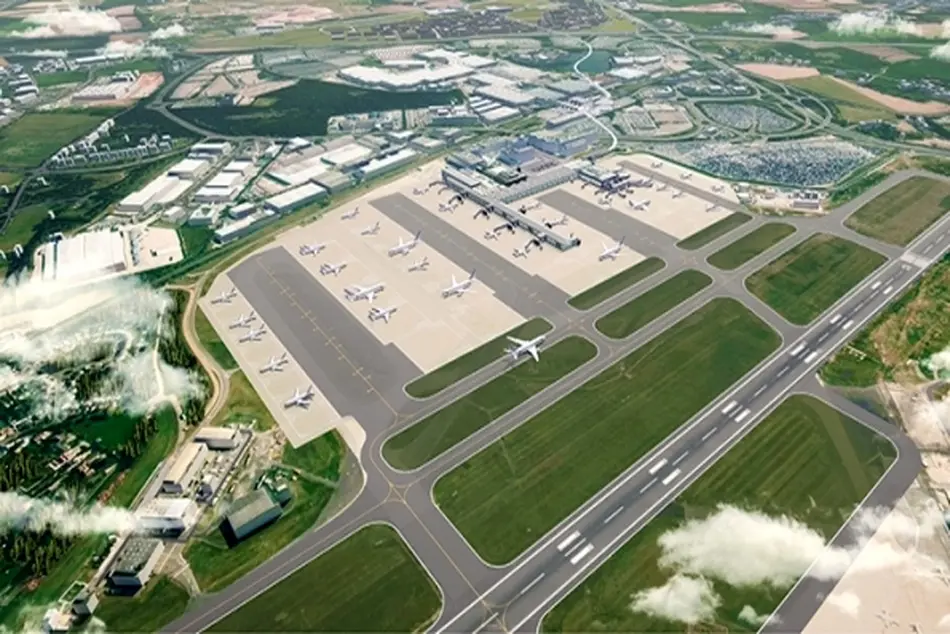Birmingham Airport shares plans to become Europe’s leading airport
Tom Screen, Aviation Director at Birmingham Airport takes a look at how the airport plans to maximise its potential using its single runway following the restated Government policy to make the best use of the UK’s existing runways.

Tom Screen, Aviation Director at Birmingham Airport takes a look at how the airport plans to maximise its potential using its single runway following the restated Government policy to make the best use of the UK’s existing runways.
With the rise of low-cost airlines over the years and increased accessibility to airports across the UK, more people are choosing air travel than ever before. Airports across the country have had to make investments to cope with the increased demand - whether this be through improving infrastructure, expanding facilities or increasing the number of staff on the ground, airports across the UK are experiencing unprecedented growth which is set to only continue with the demand for air travel set to rise by 40% by 2033.
Birmingham Airport’s Master Plan
The aviation industry is in a strong position, especially in the UK which has the largest aviation network in Europe, ranking third largest in the world. With passenger figures set to rise, airports across the country are putting plans in place to manage the forecasted increase.
Looking at Birmingham Airport in particular, to deliver increased capacity for airline customers as well as enhance the passenger experience, Birmingham Airport recently launched its Master Plan titled, ‘The Midlands Gateway to the World’. The plan details how the airport will make a self-financed new investment of £500 million over the life of the plan to improve, modernise and extend the airport’s facilities.
Birmingham Airport plans to grow from the current 13 million passengers a year to 18 million passengers (+40%) by the year 2033, with the aim of becoming Europe’s leading airport in the most balanced and responsible way possible for the environment and people who live and work in the airport’s vicinity.
Over the next 15 years, Birmingham Airport will expand and significantly develop the airport and overall customer experience - all being achievable on the existing single runway which has the capacity to handle 25 to 30 million passenger movements a year.
Improved facilities
The £500 million investment will deliver a range of new and improved facilities to ensure a seamless customer journey for all passengers, whether they are flying in or out of the airport. It is important that the investment takes the key customer touchpoints into consideration with planned improvements to be made to the overall terminal building, check in area, security search as well as arrivals.
Terminal improvements will include a larger departures lounge with more toilets, public seating, shops, bars and restaurants and with a glazed mezzanine, introducing natural light.
On the ground floor, the check in area will be opened up to provide more space and will see the introduction of the latest bag-drop technology speeding up check in time and the overall experience for passengers, as well as a new back of house baggage sortation area that will improve operational efficiency.
The airport’s security search area will be enlarged, and a new arrivals area will also be implemented for passengers arriving back into the airport.
With the increase in passengers, there was also a need to look at the reconfiguration of existing aircraft stands to meet the demand for more flights to destinations around the world. The Master Plan outlines how the airport will increase the current 58 operational stands in use today to 69 by 2033.
The UK economy
The investment will play an integral part in growing the UK economy through driving international trade, investment, employment, inbound tourism and the success of many of the region’s universities, whilst also providing more flights to cultural hubs, business centres and a greater choice of holiday destinations for the passengers who choose to fly from Birmingham Airport.
With the demand for air travel set to rise by 40% by 2033, the airport’s net contribution will increase by 42% from £1.5 billion to £2.1 billion. This will account for an 11% increase in net regional employment – from 30,900 to 34,400 jobs – with potential to reach 38,600 if links to the manufacturing sector are also considered.
What’s more, the airport will also be connected to the new HS2 Interchange Station providing truly integrated public transport. The rail journey between Birmingham Airport and central London will reduce from the current 70 minutes to 38 minutes as it becomes the UK’s first and only high-speed connected airport, increasing the two-hour catchment to 45 million people.
We understand the plans for Birmingham Airport are ambitious, but it is important that our airport grows and keeps up with the changes within the aviation industry.
We will continue with the expansion of the existing wide range of short-haul and long-haul scheduled and charter services to provide a wider customer choice. This will include new direct long-haul services to Asia and on the North Atlantic routes as well as to more European cities and the Middle East. The future for not only Birmingham Airport but the aviation industry as a whole is exciting and there is a lot to look forward to.



